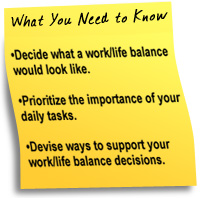 Many people describe becoming a parent as a ‘life-changing experience.’ For Cathy Leibow, however, motherhood is something that inspired her to change the lives of others. When her son, Jason, was born more than two decades ago with a heart defect and Down syndrome, Leibow immediately readjusted her priorities. She changed to a part-time work schedule and struggled to find appropriate childcare.
Many people describe becoming a parent as a ‘life-changing experience.’ For Cathy Leibow, however, motherhood is something that inspired her to change the lives of others. When her son, Jason, was born more than two decades ago with a heart defect and Down syndrome, Leibow immediately readjusted her priorities. She changed to a part-time work schedule and struggled to find appropriate childcare.
Today, Leibow is vice president of O/E FamilyCare LLC in Troy, Mich., which provides concierge services to busy individuals and businesses. She began FamilyCare—which was recently acquired—in response to her own experiences balancing the needs of work and home. Since founding the company more than 20 years ago, she has seen a surge in the number of people who say they are overwhelmed by the demands on their time. And as the baby boomer generation begins to retire, Leibow says, more families will add eldercare to their list of responsibilities.
For business owners, especially, it can seem like there is an overwhelming amount of responsibility. Luckily, there are many practical ways for individuals to create a balance between work and home life.
Know What You Want
“I think that we are a society that celebrates workaholics,” says Bonnie Michaels, president of Managing Work & Family Inc., a work/life consulting and training firm headquartered in Naples, Fla. For many people, it is a badge of honor to say ‘I work 14 hour days.’ But, says Michaels, working more doesn’t mean that you are more productive. “There are studies that show you really don’t work effectively after seven hours,” she says.
Creating a work/life balance doesn’t mean saying no to everything, it means establishing what your priorities are and sticking to them. “You have to set some very clear intentions for each day and each week,” she says. What feels like balance to one person, would obviously be different for someone else. The key is to decide what an ideal balance looks like to you. For some, balance means being able to leave work by a certain time; for others, it is a matter of having weekends to oneself; and some business owners may just want to take the occasional vacation.

Prioritize
Once you have established your idea of work/life balance, it’s time to get your hands dirty and start making it happen. Begin by categorizing what is urgent and what can wait, says Elaine Berke, president and founder of EBI Consulting Inc., in Westport, Mass., which provides business and organizational solutions for CEOs of small to midsize businesses. “Evaluate why you’re staying after 5,” she says. “Evaluate what it would matter if you left.”
Michaels recommends keeping a detailed time log, which can help you analyze where your time is going. Next, consider which tasks are less important, and should take up less of your time. “Not everything that we do deserves 100 percent,” Michaels says. For some small business owners this might mean bringing in a new hire or just loosening the reigns where it makes sense.
Give Yourself a Helping Hand
You may know that you need to work fewer hours, or that you need to take a vacation. But, as anyone who has ever tried to diet knows—willpower alone won’t help you achieve your goals. Here are some proactive measures that our consultants recommended:
- Limit the amount you check voicemail and e-mail throughout the day. Much time can be wasted on these seemingly brief tasks.
- If you plan to leave at a certain time, have a friend call or send an e-mail, or set an alarm for yourself.
- Don’t underestimate the power of getting up from your desk and taking a brief walk—it can make you more productive.

Look for Outside Help
Despite all of your best efforts, it may be impossible to create a work/life balance because there simply is too much work on your plate. If this seems to be the case, it may be time for you to let others take on some of the workload. After monitoring how your time is spent, consider what aspect of running the company takes up most of your time: Is it marketing? Accounting? For many small businesses the answer is to hire a director of sales or even a chief operating officer, Berke says. This option might be expensive, but you are likely to reap the benefits in the form of productivity, she says.
Another option is to hire companies such as O/E FamilyCare, which handle the details of everyday life—freeing up more of your time. From picking up your dry cleaning, to dealing with auto repairs, to finding elder and childcare, to planning your vacation, concierge programs are there to help manage your time. “As long as it’s not illegal or unethical, we’ll take care of it,” Leibow says. Set up costs for a business, which include employee concierge services, range from $2,000 to $10,000, in addition to a $1 or $3 monthly fee per employee, Leibow says.
